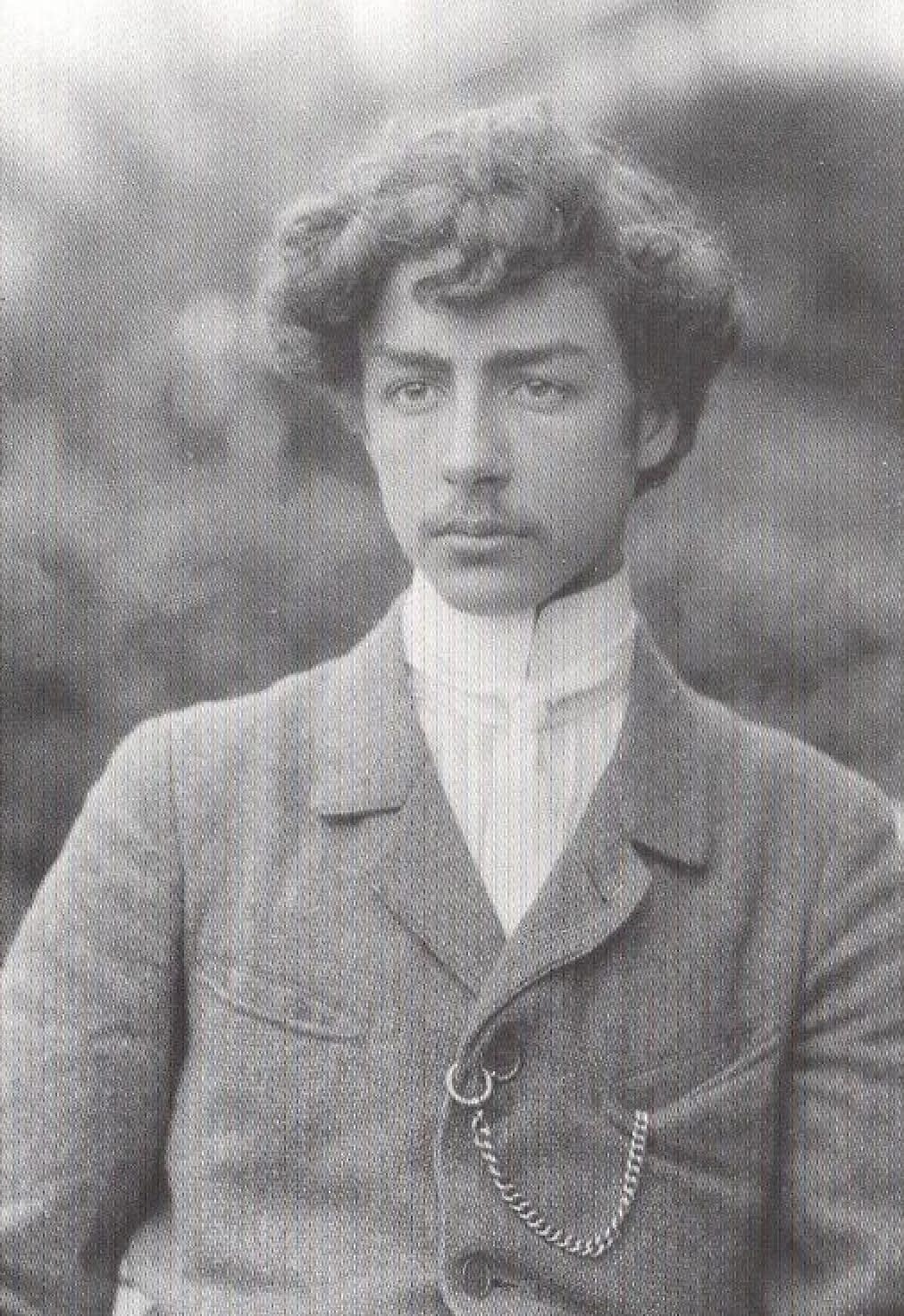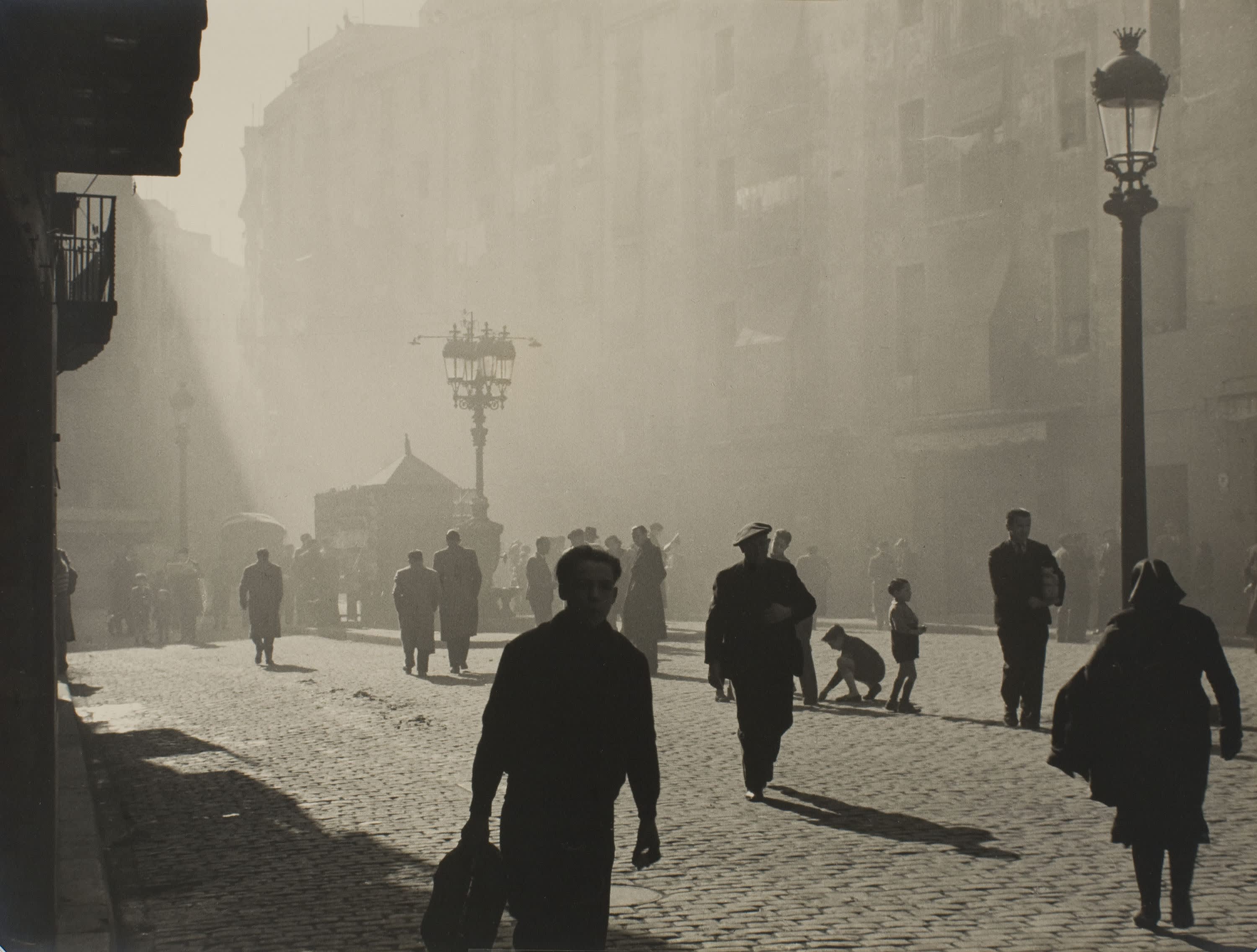Otho Lloyd (1885 - 1979)
Self-portrait of the artist
Signed and date lower right: O. HLloyd / I. 04.
Pencil on paper
29.6 x 21.1 cm. (11 ¾ x 8 ¼ in.)
Self-portrait of the artist
Signed and date lower right: O. HLloyd / I. 04.
Pencil on paper
29.6 x 21.1 cm. (11 ¾ x 8 ¼ in.)
Otho Lloyd’s self-portrait, Symbolist in inspiration, was drawn in January 1904 when the young artist was aged nineteen. With his lapelled collar, neck-tie, thin downy moustache and floppily parted hair, Lloyd is every inch the upper-class dandy. This perhaps comes as no surprise for the nephew of Oscar Wilde. A photograph of approximately the same date shows Lloyd looking just as rakish, though with his hair more tousled and unruly (fig. 1).

Fig. 1, Photograph of Otho Lloyd, c. 1904
Lloyd was born in London in 1885 to a fascinating and eccentric family. His father was the successful lawyer Otho Holland Lloyd, whose sister Constance married Wilde in 1884. Lloyd’s mother was a governess called Hélène St Clair, known as Nellie. His parents had married the previous year, despite the reservations of his father’s family. The family moved to Switzerland to escape the scandal of Oscar Wilde, where Otho Holland abandoned his new wife in 1887, soon after the birth of their second child, Fabien Avenarius. This was the future Arthur Craven, a 6 foot 7 poet, artist, critic and boxer, who was allegedly expelled from school for spanking a teacher, was KO’d by Jack Johnson in their 1916 bought, and was last seen at the port of Salina Cruz in Mexico in 1918, presumed lost at sea. Nellie sued for divorce and won a substantial settlement, going on to marry a Swiss doctor.
Lloyd was educated in both Switzerland and England, and studying painting with André de Segonzac and Henri Matisse. Prior to World War I, he was based in Munich, living off a substantial remittance from his mother. He met his wife, the Russian emigrée artist Olga Sacharoff, in Germany. The two moved to Paris in 1912, where they were close to another Russian emigrée painter, Marie Vassilieff, and became active members of her circle. The outbreak of war forced them to relocate to Spain, initially settling in Mallorca before moving to Barcelona. It was here that Arthur Craven fought Johnson, with Lloyd leading his younger brother to the ring. Sacharoff and Lloyd separated in 1929, though a joint exhibition in New York in 1939 may suggest some form of reconciliation.
Lloyd was more a dilettante than professional artist for the first fifty years of his life, postponing his career until the 1939 New York show, the moment he finally felt ‘fully prepared’ to exhibit in public.[1] The exhibition contained eight paintings, all landscapes and cityscapes, from between 1930 and 1938, painted in Paris, South-West France and Catalonia. Lloyd continued to paint landscapes throughout the 1940s. Much more interesting, successful and individual, however, are his photographs, taken throughout the same period, many of which were shown in a 1992 retrospective in Barcelona.[2] With their soft tonalites, and mastery of light and shade (fig. 2), they are in many ways a natural progression from the 1904 self-portrait.

Fig. 2, Otho Lloyd, Plaça de Sant Augustí Vell, Barcelona, 1946, silver gelatin print,
Museu Nacional d’Art de Catalunya, Barcelona
